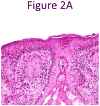New diagnostic aids for melanoma
- PMID: 22800557
- PMCID: PMC3623959
- DOI: 10.1016/j.det.2012.04.012
New diagnostic aids for melanoma
Abstract
Detection of melanoma at an early stage is crucial to improving survival rates in melanoma. Accurate diagnosis by current techniques including dermatoscopy remains difficult, and new tools are needed to improve our diagnostic abilities. This article discusses recent advances in diagnostic techniques including confocal scanning laser microscopy, MelaFind, SIAscopy, and noninvasive genomic detection, as well as other future possibilities to aid in diagnosing melanoma. Advantages and barriers to implementation of the various technologies are also discussed.
Copyright © 2012 Elsevier Inc. All rights reserved.
Conflict of interest statement
Dr. Ferris: Served as an investigator and consultant for MELA Sciences and as an investigator for DermTech International
Dr. Harris: No conflicts of interest to declare
Figures





References
-
- Siegel R, Ward E, Brawley O, et al. Cancer statistics, 2011: the impact of eliminating socioeconomic and racial disparities on premature cancer deaths. CA: a cancer journal for clinicians. 61:212–236. - PubMed
-
- Alexandrescu DT. Melanoma costs: a dynamic model comparing estimated overall costs of various clinical stages. Dermatology online journal. 2009;15:1. - PubMed
-
- Friedman RJ, Gutkowicz-Krusin D, Farber MJ, et al. The diagnostic performance of expert dermoscopists vs a computer-vision system on small-diameter melanomas. Archives of dermatology. 2008;144:476–482. - PubMed
-
- Carli P, Nardini P, Crocetti E, et al. Frequency and characteristics of melanomas missed at a pigmented lesion clinic: a registry-based study. Melanoma research. 2004;14:403–407. - PubMed
Publication types
MeSH terms
Grants and funding
LinkOut - more resources
Full Text Sources
Other Literature Sources
Medical

